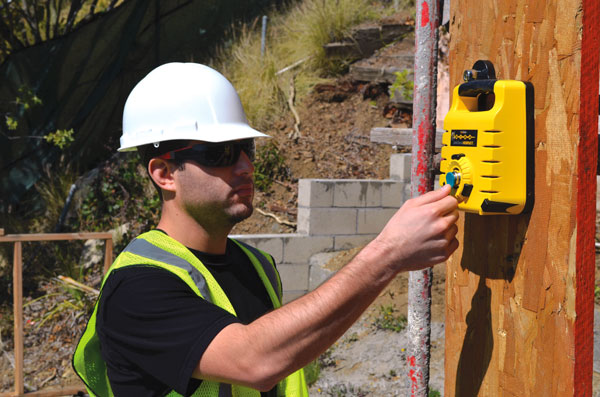According to the American Payroll Association, paper time sheets cost businesses an average of four hours and five minutes per employee per week, each time card takes the company an average of six minutes to process and there’s a 1- to 8-percent error rate of total payroll when manually processing them. These figures don’t include the hassle of collecting the time cards, the struggle of finding supervisors for time-card approval or the frustration of trying to read workers’ handwriting when entering data.
Most contractors know that paper time cards are inefficient methods of tracking workers’ hours, but some are reluctant to adopt alternative time-tracking solutions. Some contractors don’t believe their employees are tech savvy enough for an electronic system and don’t want to spend the time training them. Others cannot find solutions with devices that can survive at outdoor jobsites.
However, the most common barrier to contractors employing such solutions is their fear of the perception that employees will have of new systems and of the owners implementing them. To some, automated time-tracking systems may imply distrust, and no smart business owner would want to harbor feelings of distrust among employees.
 There is, however, a smart way to roll out such solutions. Automating your time tracking while keeping the trust of your employees begins with communication. When a construction organization decides to adopt an electronic time-tracking solution, management should hold an employee meeting introducing the new system before implementing it.
There is, however, a smart way to roll out such solutions. Automating your time tracking while keeping the trust of your employees begins with communication. When a construction organization decides to adopt an electronic time-tracking solution, management should hold an employee meeting introducing the new system before implementing it.
Introducing the Solution
During the meeting, it is important to follow a three-part introduction process: Explain why you are using the new system, show employees how to use it and tell them what is expected of everyone.
In explaining why you are using the new system, tell your employees that you are moving to an electronic time-tracking system to run your business better, not to micromanage your workers. This may be their chief concern. Explain that you need to bring in an attendance system that streamlines your payroll processing and that accurate time records will help with future job costs and protect your business in the case of an audit or wage-and-hour dispute.
Don’t forget to remind them that no one enjoys using paper time cards anyway. Employees don’t like trying to remember how long they worked, and they don’t enjoy tracking down supervisors for signatures. Additionally, bookkeepers don’t like collecting, reading and manually entering data every pay period. Electronic systems replace these messy processes.
Also remind them that the system will automatically calculate overtime and will import time records directly into the company’s payroll or accounting application. This will help ensure that they are paid accurately and on time.
Show them how to use it. Bring the time clocks with you to the meeting, and pass them around. Give employees a chance to clock in and out, and encourage them to ask questions. Remind employees of your lunch and break policies, and explain whether they need to clock in and out for those occurrences. Remember to tell them where the devices will be found at the jobsite.
In general, impress upon employees the ease of clocking in and out with the new system, compared to the tediousness of filling out paper time cards.
Set expectations for everyone. Make it clear that “I forgot to clock in” will not be an acceptable excuse and that tampering with the system or failing to clock in will result in penalties. At the same time, reward employees who use the system correctly. Movie tickets, for instance, could be awarded to employees with perfect punch-ins during the first few weeks of use.
Coinciding with the explanation that electronic time tracking will ensure that employees receive proper pay, tell them that they may receive printed copies of their time records by request. It’s important to stay focused on the business reasons for transitioning to an electronic system. You may have purchased the system because of lax timekeeping habits, but when the solution is introduced to employees, the conversation should remain framed by the context of operational efficiency.
Once the meeting is complete, you’ve taken the appropriate initial steps toward implementing an electronic time-tracking system into your workforce. As long as your workers understand why management has adopted the solution and management enforces the company’s attendance policies, the transition should not be difficult.
A Smooth Transition
When implementing the system, there should be a transition period of at least two weeks, during which employees use the new system and handwritten time cards. This gives everyone a chance to integrate clocking in into their daily routines and to minimize error while acclimating to the system, and it gives the bookkeeper a backup in case of errors. There should be a definite start date at the end of the transition period, at which point everyone begins using the new system exclusively. This is important so that the company can begin benefitting from the improvement in efficiency.
Difficulties often accompany the initial stages of change, but with the right approach, transitioning to an automated system can be an easy process, and the end result can save businesses money.
